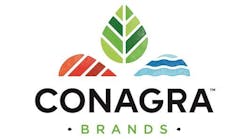The bubble quickly burst at May’s Food Safety Summit for those hoping for insight into the Amazon-Whole Foods juggernaut and how it may disrupt the conventional food supply chain.
Carletta Ooton, Amazon’s vice president for health, safety, sustainability, security & compliance, keynoted the May 9 conference program. She prefaced her remarks by saying she would not touch on the e-commerce retailer’s plans for leveraging the 18.7 million sq. ft. of refrigerated storage space it added in the Whole Foods acquisition.
Instead, Ooton provided a tutorial on how Amazon relies on Big Data to monitor incidents of foodborne illnesses and to decide whether to suspend or continue shipping products. It was a useful primer for a session later in the day, when Craig Wilson of Costco Wholesale Inc. spoke in a panel on using Big Data and social media to communicate with customers when a food safety event occurs.
The use of Big Data isn’t the only Amazon-Costco connection. In addition to being King County, Wash., neighbors, “We benchmark against each other,” explained Wilson, vice president and general merchandising manager of quality assurance/food safety at the Issaquah, Wash.-based club store chain. The food safety collaboration exists despite growing competition: Working with Instacart and other services, Costco is expanding direct-to-home deliveries of perishable foods.
Early detection of food contamination events is the common thread in both companies’ food safety programs. Amazon monitors 67 public websites for alerts on recalls and possible food illnesses, Ooton said, adding “customer feedbacks are a true gift, and we obsessively seek them.” Email feedback accounts for three-fifths of the 1.6 million incidents of customer feedback received each week, with social media providing a growing share of the balance.
Managing that much data is a challenge compounded by the fact it arrives in 40 different languages, she said. Machine learning programs that translate the inputs and analyze the sentence structure to interpret the sentiment being expressed give the messages context in five seconds.
In-house subject matter experts have reviewed hundreds of thousands of customer comments over the years, and their expertise enables the machine learning models to prioritize the comments. As an example, Ooton cited a message from a customer who became ill after consuming an energy-boost product. Based on the text, the machine learning model assigned an 87.4 percent confidence rating that it was a food safety issue. Amazon immediately suppressed all product shipments from its 250 global distribution centers.
Another customer comment involving a bad-tasting product was assessed to be 9 percent likely to involve a food safety issue, so no action was taken.
A single complaint Dec. 1 involving a dietary supplement caused Amazon to immediately pull the suspect product out of distribution. It would be 57 days before the manufacturer ordered a recall because of undisclosed allergens in the product.
Traceability as it applies to food products is contingent on a unique item code known as ASIN, short for Amazon Standard Identification Number. To illustrate, Ooton used the example of a deli log that is sliced to fill individual orders:
Before slicing, an operator scans the ASIN, triggering an automated allergen cross-check. If the log is allergen-free but the slicer previously sliced a product with allergens, the operator cannot proceed unless the slicer undergoes 20 minutes of cleaning and sanitization. When the log is sliced to fill the order, a “child ASIN” label tied to the parent ASIN and unique to that order is generated, facilitating a recall in the event the log is subsequently associated with a food poisoning outbreak.
Costco’s traceability program is similar to Amazon’s, and like the online retailer, its members-only format allows Costco to associate a recalled product with the individuals who purchased it. To enhance supply chain traceability, the firm has conducted three proof-of-concept tests involving block chain, according to Wilson.
When grinding of beef trim is done at the store level, origin information is incorporated on a UPC 128 label that is scanned and married to packages made from the trim. “We have a list of every animal that is in that ground beef,” Wilson boasted.
“Always protect the Costco member” is the firm’s mantra, he added, an echo of Amazon’s “customer obsession” leadership principle. Costco only stocks 1,400 food SKUs, and if any are suspected of being tainted, “we never wait. It’s only one item, we can pull it off the floor, no problem.”
Phone numbers for 92-96 percent of the 95 million members are in Costco’s database, and the company can call 3.8 million of them in an hour. Half the members can be contacted via email, and an IT staff of 2,000 is expanding Costco’s ability to reach them with text message and social media.
With annual sales of $140 billion, Costco doesn’t trail Amazon’s $177 billion revenue stream by much. But sales volume isn’t their primary distinction: it’s their commitment to closing the farm-to-fork traceability loop.


